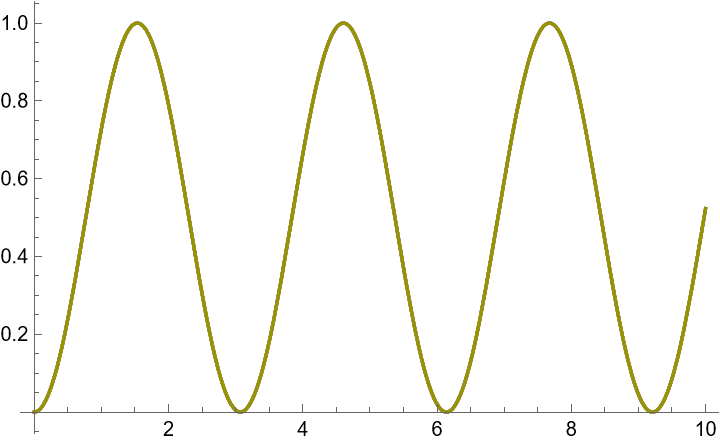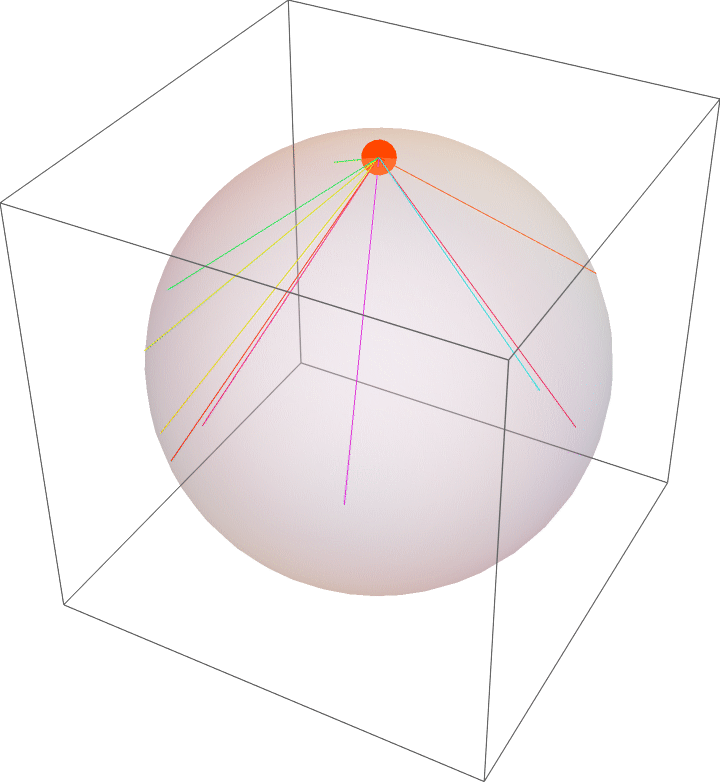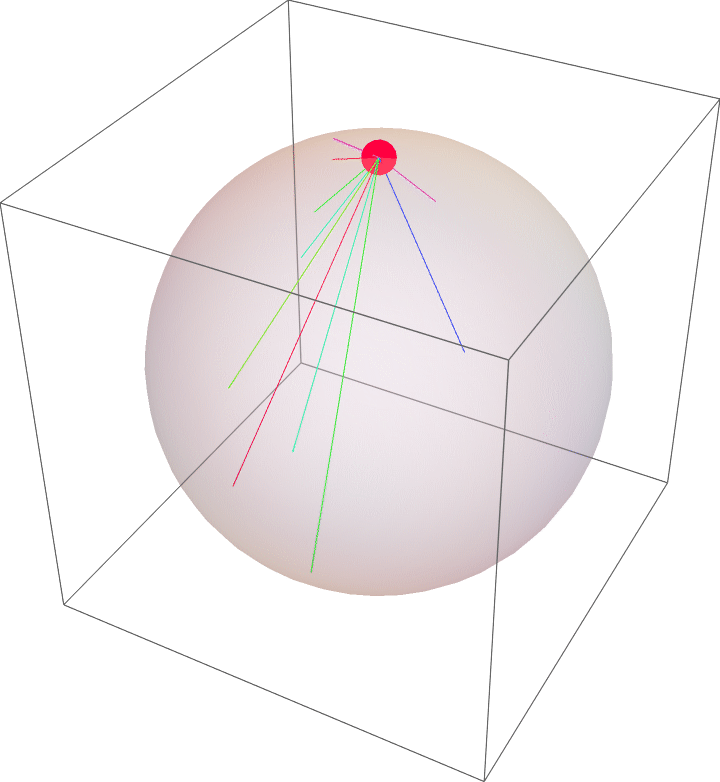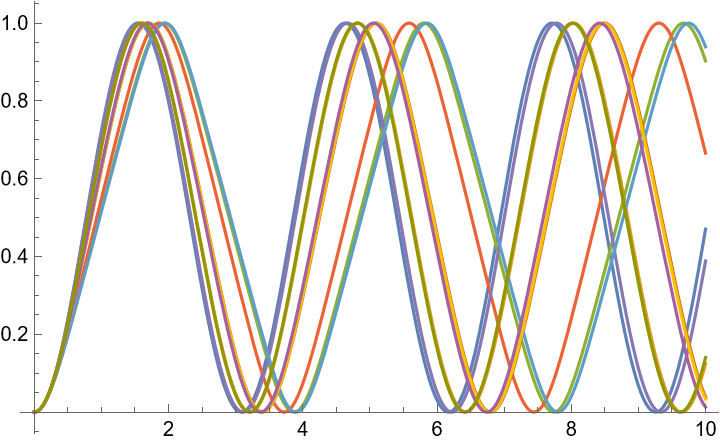Pick a point on the earth and start digging. It doesn’t have to be straight down. Keep it straight (careful! it’s harder than you might think) and keep going until you come back to the surface. Ok, now drop a ball into your hole. It’ll come back to you eventually because while gravity will pull it down the hole at the beginning, eventually it’ll start getting further from the center of the earth and start slowing down. Assuming the earth’s density is spherically symmetric, it’ll come to a stop right at the edge of the other end, turn around, and come back.
If in addition to being spherically symmetric the earth’s density was also uniform, the travel time of the ball will be independent of the direction you dug the hole. In other words connect any two points on the surface of this idealized earth and the time it takes the ball to tunnel from one point to the other and back will be the same! Pretty cool, right?
I wanted to see if I could 1) make cool animations of that, and 2) see if my intuition would be right for non-uniform spherically symmetric densities. Before you scroll any further, make a prediction: If the planet is more dense towards the center, will a tunnel that gets close to the center take more or less time than a shallow tunnel?
The model
I modeled this using the Wolfram Engine (for free!) which is basically mathematica but using a Jupyter interface. I used a Lagrangian approach which just means I needed to identify the degrees of freedom (the distance down the tunnel) and figure out how to express both the kinetic and potential energy for a particle using that variable. If p1 and p2 are the two points on the surface of the earth, I parametrized my problem with the variable s such that if s is zero we’re at p1 and if s is one we’re at p2. When s is between zero and one it’s in the tunnel:
Then the kinetic energy is:
which will be a function of s.
The potential energy is a little trickier but basically it’ll always be:
where the total Mass, M, that is closer to the center that the point of interest is given by:
assuming r is less than the radius of the planet.
Simulations
Here’s a plot of s as a function of time for a uniform density planet in a universe where G=1, m=1, and the radius of the planet = 1:

Here’s an animation of 10 different random tunnels all dug from the north pole. Note how they stay in sync:

Ok, time to check your intuition. Consider a planet whose density varies as 1/r. That means it’s technically infinitely dense right at the center and it progressively gets less dense as you get further out. Which tunnels will be faster? The ones that are shallow, and so only ever experience the lower densities, which means they always feel nearly the full gravitational pull of the planet? Or the ones that dive deep and explore portions of the planet with high densities?
Here’s what I was thinking: The shallow ones never penetrate where the bulk of the mass is. That means their force stays high. Therefore I think they should be faster.
Here’s a plot of 10 random tunnels, note how they don’t stay in sync:

Here’s the animation:

For me it’s easiest to see the effect if you stare at the upper left purple one and keep your peripheral attention on the central green one. You can tell that the shorter path takes longer! I was wrong!
Ok, what about the opposite: a density that grows linearly with distance from the center. That means there’s no density at the center and the maximum density is at the outer edge.
First a plot of the trajectories:

and here’s the animation:

See how the lower right red one really falls behind? Cool, huh?
Your thoughts?
I’d love to hear what you think about all this. Here are some starters for you:
- This is really cool! What about a planet that . . .?
- This is really dumb! What you forgot about was . . .?
- My intuition was right! Here’s what I was thinking . . .
- My intuition was wrong! Therefore all of physics is wrong.
- I just assume the potential energy is always GMm/r and you just have to figure out the M. (that’s what I naively thought too as I started but realized that you have to do the integrations to get it right)
- Did you set all the planets to have the same total mass? (yes)
- Why do you insist on using an expensive piece of software that normal people can’t afford . . . wait, what did you do two posts ago?
- What happens if the density is not spherically symmetric? What are you, lazy?
- You clearly didn’t model the effects of a spinning planet, even though you forced us to click through to a whole other blog post about digging holes. Be consistent!
- Why didn’t you dig identical tunnels for all three planets? It’s super tough for me to directly compare them. My guess is you got all excited about using RandomPoint[Sphere[], n] in the Wolfram Engine.

I was wrong, too I love it!
Pingback: Constraint forces for path in 3D | SuperFly Physics